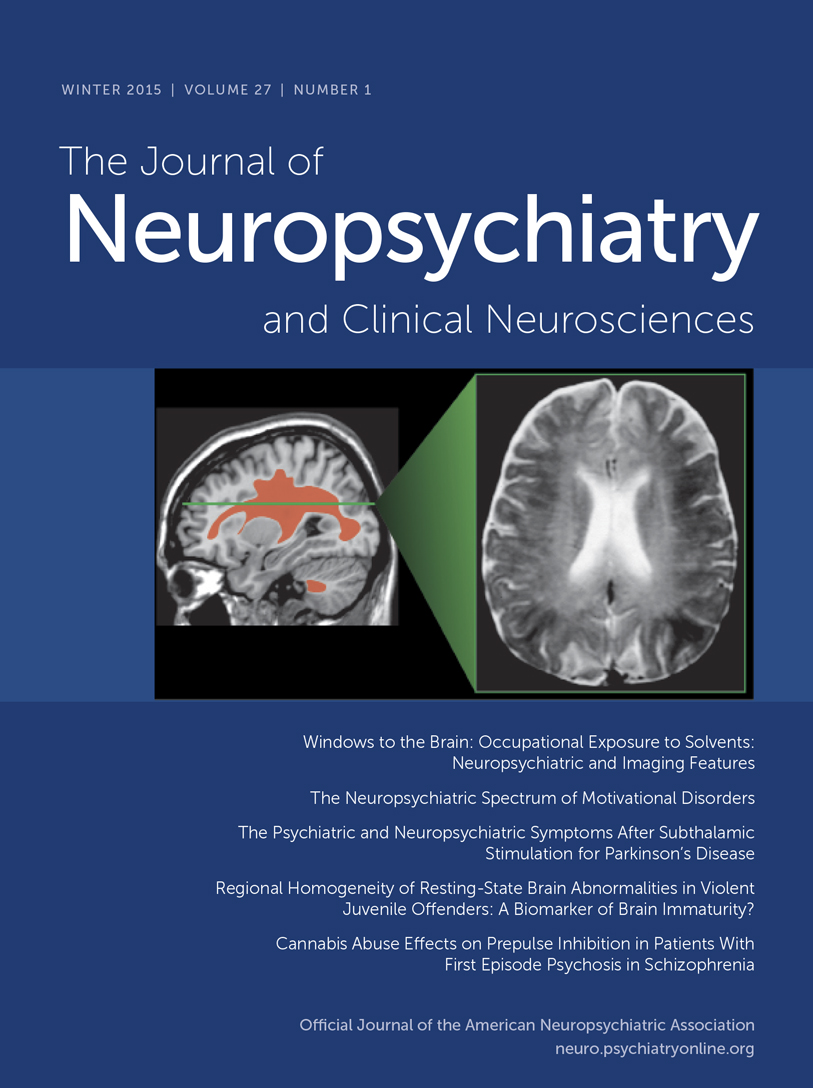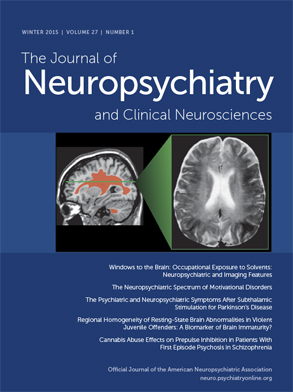Neurostimulation
Consider the function of the basal ganglia in the selection and facilitation of movement, cognition and emotion. The STN has a regulatory role, providing an inhibitory NO-GO signal in the cortico-subcortical networks of the basal ganglia.
9 A gradient of representations exists within the STN, with motor activity located in the dorsolateral aspect of the nucleus, cognitive-associative circuits in the intermediate zone, and limbic circuits in the ventromedial region.
10 Functional inhibition of the STN using high-frequency stimulation facilitates movement but may release cognitive and affective disinhibition in certain individuals. The small size of the STN means that current diffusion from accurately placed electrodes may still inadvertently modulate networks implicated in mood, thinking, and reward, including the anterior cingulate cortex, the orbitofrontal cortex, and the ventral tegmental area. Electrodes situated in the ventromedial STN
11 or the substantia nigra
12 seem more likely to produce these nonmotor side effects.
In PD, variable patterns of cell loss within the basal ganglia also modify the outcome of DBS. Mesencephalic dopaminergic projections within motor and nonmotor networks degenerate at different rates,
13 such that motor and nonmotor responses may vary for a given level of stimulation. Following DBS, STN stimulation sufficient to restore a degenerated hypodopaminergic motor circuit may cause a functional imbalance in an adjacent nondegenerated nonmotor circuit.
The postoperative presentation resembles mania or hypomania, with a variable incidence of between 1% and 15%,
14,15 although stimulation-induced reversible depressive symptoms have also been described following inadvertent electrode placement in the substantia nigra.
16 Stimulation effects can be distinguished from intraoperative microlesioning by their persistence and temporal association with DBS adjustment. Clinically, the most common features are an elevated or irritable mood, racing thoughts, impulsivity, and an increase in goal-directed activity. Insomnia and agitation may also be present. Some cases manifest attenuated symptoms, making the diagnosis more difficult to capture and potentially accounting for the discrepancy in reported incidence. Close family members such as spouses are nonetheless likely to detect these changes and commonly complain that the patient is no longer himself. Impulsivity is frequently noted and may be a common endophenotype in this cohort, defined informally as the tendency to act prematurely, without foresight. Some neuropsychological correlates of impulsivity are known to change after STN DBS, such as impaired response inhibition
17 and increased speed of decision making in situations of conflict.
18Dopaminergic Medication
Treatment with DRT is also associated with neuropsychiatric complications that may persist or worsen after DBS. In these patients, exogenous dopamine disrupts the function of the basal ganglia in a manner that predisposes to impulse control disorders (ICDs) such as pathological gambling, hypersexuality, compulsive shopping, binge eating, and punding.
19 These disorders appear unified by the concept of compulsivity, namely a maladaptive perseveration of behavior that is inappropriate to the situation and results in undesirable consequences. There is an overlap with impulsivity with the two differentiated by their relevance to different aspects of response control: impulsivity to response initiation and compulsivity to response termination. Correspondingly, patients with ICDs also score highly on neuropsychological measures of impulsivity,
20 are more likely to have a novelty-seeking temperament, and are more likely to have experienced medication-induced hypomanic symptoms.
21Preclinical evidence implicates the nucleus accumbens in the pathophysiology of these behaviors.
22 A region of the ventral striatum that is vulnerable to dopaminergic destabilization, the nucleus accumbens is associated with hedonic tone and reinforcement learning. Chronic dopaminergic stimulation provided by DAs attenuates the regulatory drive of the prefrontal cortex to this region, with a predominance of appetitive limbic inputs and a loss of behavioral flexibility. This process is augmented by sensitization of the ventral striatal neurocircuitry
23 and the affinity of DAs for D
3 receptors that predominate in this region.
24 Functional imaging indicates that patients with ICDs have a specific vulnerability to deactivation of frontal regulatory circuits,
25 and recent work identified a structural vulnerability to impulsivity in gray matter atrophy of fronto-striatal regions.
26The relationship between STN DBS and ICDs is controversial. By permitting substantial postoperative reduction in DRT, STN DBS has been considered a potential treatment for ICDs. However, this is not consistently supported in the literature, with 70% of patients with ICDs remaining unchanged or worsening after DBS in one series.
27 New-onset ICDs have also been reported after DBS.
28If postoperative mania is caused by disinhibition of limbic and associative networks, then underactivation of these same nonmotor circuits also produces characteristic neuropsychiatric sequelae. Substantial reduction of DRT following STN DBS is common practice as electrical stimulation in motor regions of the STN predominates. It may, however, unmask symptoms such as apathy, depression, and anxiety in up to 50% of patients.
29 For these individuals, DRT has a psychotropic effect and withdrawal symptoms arise on discontinuation,
30 particularly in those treated with dopamine agonists.
31 The symptoms of this dopamine agonist withdrawal syndrome include anxiety, agitation, depression, irritability, insomnia, and suicidal ideation, and respond to DA repletion. Dopamine agonist withdrawal syndrome, therefore, may be a driver of postoperative neuropsychiatric complications after STN DBS.
32 As DRT withdrawal is not a problem for all patients, the PD-related denervation pattern may explain this hypo-dopaminergic vulnerability, with afflicted individuals having greater mesocorticolimbic dopaminergic denervation than those without symptoms.
29Summary
We contend that many post-DBS neuropsychiatric disturbances have a biological basis in neurostimulation, dopaminergic tone, and neurodegeneration. STN DBS and the attendant alterations in DRT represent an acute insult to a compensated but brittle homeostatic system regulating movement, mood and cognition—already anatomically and physiologically disrupted prior to surgery. There may arise a postoperative dissociation between motor and nonmotor outcomes as stimulation parameters and DRT are optimized to restore degenerated motor circuits, with resultant imbalance in topographically distinct functional networks.
Despite the psychiatric sequelae of these complex disruptions to brain neurocircuitry, the natural history of post-DBS neuropsychiatric symptoms appears to trend to an attenuation of symptoms (including suicide risk) in the months and years that follow DBS. It is unclear whether this represents the progression of neurodegeneration or a slow recovery of stable homeostasis via preserved mechanisms of neuroplasticity. This process plays out in an individual with a unique temperament, specific constellation of psychiatric morbidity, and a support network with a variable capacity to respond to disruption. It is particularly in the early postoperative course that the psychiatrist’s expertise is relevant, when nonmotor circuits seem at particular risk of dysregulation and the patient at risk of an adverse outcome.

